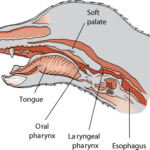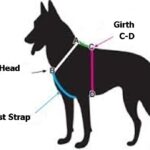Can Dogs Have Pizza
Dogs are beloved pets that share many things with their owners, including meals. However, not all human foods are safe or healthy for dogs to eat, and pizza is a common example. While some dogs may enjoy the taste of pizza and can tolerate small amounts of certain toppings, others may experience digestive problems, obesity, or even toxicity from eating pizza. Therefore, if you’re wondering whether dogs can have pizza, the answer depends on various factors that we’ll explore in this comprehensive guide.
Introduction: Why Pizza Is Popular Among Humans and Dogs
Pizza is a classic Italian dish that has become a global favorite due to its versatility, convenience, and flavor. Pizza typically consists of a crust made of flour, yeast, water, and salt; a sauce made of tomatoes, herbs, and spices; and various toppings such as cheese, meat, vegetables, or fruits. Pizza can be cooked in different ways, such as in an oven or on a grill, and can be customized to suit individual preferences and dietary needs.
Humans love pizza for many reasons: it’s delicious, easy to order or make at home, affordable, filling, and satisfying. Pizza can also serve as a social food that brings people together for parties, dates, or gatherings. Moreover, pizza has evolved into different styles and variations around the world, such as Neapolitan pizza in Italy, New York-style pizza in the US, deep-dish pizza in Chicago, or sushi pizza in Japan.
Dogs may also love pizza for some of these reasons: it smells good (to them), it contains meat (which most dogs crave), it’s often shared by their owners (who they trust and bond with), and it’s something new or exciting (as opposed to their usual dog food). However, dogs cannot appreciate the complexity or diversity of flavors that humans do since their taste buds are less sensitive than ours and they have a different digestive system. Therefore, dogs may not benefit from eating pizza as much as humans do, and may even suffer from some negative effects.
Section 1: Can Dogs Eat Pizza Crust?
The crust of a pizza is usually made of wheat flour, which contains gluten and carbohydrates. While gluten is not toxic to dogs, it can cause allergic reactions or intolerance in some dogs who are sensitive to it. Symptoms of gluten intolerance in dogs may include diarrhea, vomiting, skin rashes, itching, or ear infections. Therefore, if your dog has a history of food allergies or intolerances, you should avoid giving them pizza crust or any other food that contains gluten.
Carbohydrates are also present in pizza crust and can provide energy for dogs. However, too much carbohydrate intake can lead to obesity in dogs, which is a common health problem that affects millions of dogs worldwide. Obesity can increase the risk of other health issues such as diabetes, heart disease, joint problems, and cancer. Therefore, if your dog is already overweight or prone to gaining weight easily, you should limit their consumption of high-carbohydrate foods like pizza crust.
Another factor to consider when feeding your dog pizza crust is the seasoning or toppings that may be present on it. Some pizza crusts are brushed with garlic butter or olive oil, which can be beneficial for humans but harmful for dogs in excess. Garlic and onions contain compounds that can damage dogs’ red blood cells and cause anemia if ingested regularly or in large amounts. Therefore, you should avoid giving your dog pizza crust that has been seasoned with garlic or onions.
If the pizza crust is plain and free of allergens or additives that could harm your dog’s health, then you can offer them a small piece as a treat once in a while. However, keep in mind that pizza crusts are not nutritionally balanced for dogs and should not replace their regular meals or treats. Also, make sure to supervise your dog while they’re eating pizza crust and avoid giving them too much at once, as it could cause choking or digestive issues.
Section 2: Can Dogs Eat Pizza Sauce?
The sauce of a pizza is usually made of tomato paste or puree, which contains vitamins, minerals, and antioxidants that can benefit humans. Tomatoes are rich in vitamin C, potassium, fiber, and lycopene, which have been linked to lower risks of cancer, heart disease, and inflammation. However, dogs may not be able to digest tomatoes as well as humans do since they lack the enzyme necessary to break down the plant cells’ walls.
Moreover, some dogs may be allergic to tomatoes or develop stomach upset from consuming them. Symptoms of tomato intolerance in dogs may include vomiting, diarrhea, excessive drooling, or lethargy. Therefore, if your dog has never eaten tomatoes before or has had adverse reactions to them in the past, you should avoid giving them pizza sauce or any other food that contains tomatoes.
Another factor to consider when feeding your dog pizza sauce is the seasoning or additives that may be present in it. Some pizza sauces contain salt, sugar, herbs, spices, or artificial flavors that can be harmful or unnecessary for dogs. Salt can lead to dehydration and electrolyte imbalances in dogs if ingested excessively or regularly. Sugar can cause tooth decay, obesity, and diabetes in dogs if consumed regularly or in large amounts. Herbs like oregano or basil are safe for dogs but should not be used in excess due to their strong flavor and potential for gastrointestinal upset. Spices like pepper or chili powder are not recommended for dogs since they can irritate their mucous membranes and cause pain or inflammation.
If the pizza sauce is plain and free of allergens or additives that could harm your dog’s health, then you can offer them a small amount as a topping once in a while. However, keep in mind that pizza sauce is not nutritionally complete for dogs and should not replace their regular meals or treats. Also, make sure to remove any excess sauce from the pizza slice before giving it to your dog, as it could drip and stain carpets or furniture.
Section 3: Can Dogs Eat Pizza Toppings?
The toppings of a pizza are usually the most flavorful and diverse part, ranging from meats to vegetables to fruits to cheeses. While some pizza toppings may be safe or even beneficial for dogs, others can be harmful or toxic if consumed in excess or regularly.
Meats such as pepperoni, sausage, bacon, or ham are popular pizza toppings that many people enjoy. However, these meats are often high in fat, sodium, and preservatives that can harm dogs’ health over time. Fat can cause pancreatitis in dogs if ingested excessively or suddenly. Pancreatitis is a painful inflammation of the pancreas that can lead to vomiting, diarrhea, abdominal pain, dehydration, and even death if left untreated. Sodium can lead to hypertension and water retention in dogs if consumed regularly or excessively. Preservatives like nitrates or nitrites can increase the risk of cancer and other diseases in dogs if consumed regularly or excessively.
Therefore, you should avoid giving your dog pizza with meat toppings unless they’re made specifically for dogs and contain lean meat without additives. Alternatively, you can give your dog small pieces of cooked chicken breast or turkey breast as a treat instead of pizza meat toppings.
Vegetables such as mushrooms, peppers, onions, or olives are also common pizza toppings that many people enjoy. However, some of these vegetables can be harmful or toxic to dogs if consumed raw or in large amounts. Mushrooms can cause digestive upset and even liver damage in dogs if ingested raw or wild varieties. Peppers can cause stomach pain and diarrhea in dogs if ingested excessively or in spicy varieties. Onions and garlic can cause anemia and digestive upset in dogs if ingested regularly or in large amounts. Olives are safe for dogs but should be given in moderation due to their high salt content.
Therefore, you should avoid giving your dog pizza with vegetable toppings unless they’re cooked and free of harmful ingredients. Alternatively, you can give your dog small pieces of cooked or steamed vegetables like carrots, green beans, or sweet potatoes as a treat instead of pizza vegetable toppings.
Fruits such as pineapple or apple are rare pizza toppings that some people enjoy. While these fruits are safe for dogs in small amounts, they’re not recommended as pizza toppings for dogs since they add unnecessary sugar and acidity to their diet. Dogs do not need fruits as part of their regular diet since they get enough vitamins and minerals from their dog food. Therefore, you should avoid giving your dog pizza with fruit toppings unless it’s a special occasion and the toppings are minimal.
Cheeses such as mozzarella, cheddar, or parmesan are essential pizza toppings that many people love. However, cheese is also high in fat, sodium, and lactose that can harm dogs’ health over time. Fat and sodium have been discussed before as risk factors for pancreatitis and hypertension in dogs. Lactose is a sugar found in milk products that many dogs cannot digest properly after weaning off their mother’s milk. Lactose intolerance in dogs can cause diarrhea, gas, bloating, or vomiting.
Therefore, you should avoid giving your dog pizza with cheese toppings unless it’s made specifically for dogs and contains low-fat cheese without lactose. Alternatively, you can give your dog small pieces of low-fat cheese such as cottage cheese or plain yogurt as a treat instead of pizza cheese toppings.
Conclusion: Should Dogs Have Pizza?
In conclusion, while dogs can eat pizza in moderation and under certain conditions, it’s not recommended as a regular or essential part of their diet. Pizza is a human food that may contain ingredients or seasonings that can harm dogs’ health, such as gluten, garlic, onion, tomatoes, salt, sugar, fat, sodium, nitrates, lactose, or spices. Moreover, pizza is not nutritionally balanced for dogs and may lead to obesity or other health issues if consumed regularly or excessively.
Therefore, if you want to share some pizza with your dog as a treat or reward, make sure to choose plain and simple toppings that are safe and healthy for them. Also, make sure to remove any excess crust or sauce from the pizza slice before giving it to your dog. And most importantly, always consult with your veterinarian before making any changes to your dog’s diet or feeding habits. Your vet knows your dog’s individual needs and can recommend the best course of action based on their age, breed, weight, health status, and lifestyle.



